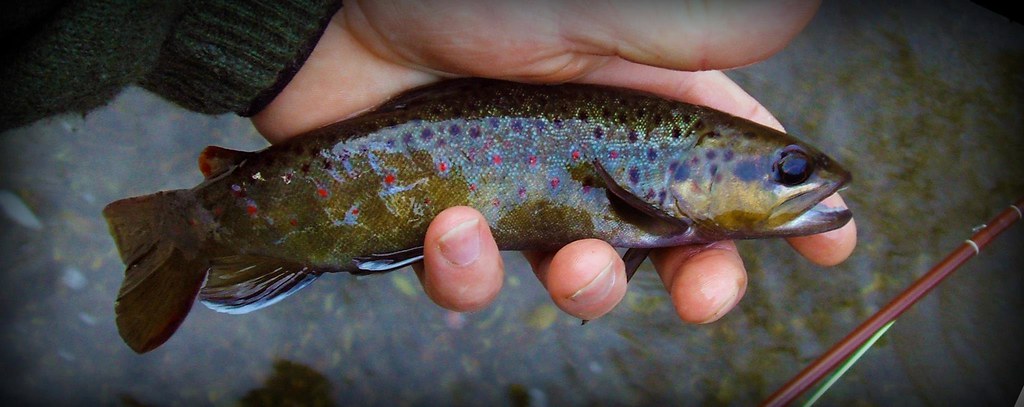“Shocking Reproductive Strategies of Brown Trout, Atlantic Salmon, and More!”
Mart R. Gross of the University of Toronto presented and interesting paper in 1984 titled Sunfish, Salmon, and the Evolution of Alternative Reproductive Strategies and Tactics in Fishes. He identifies some interesting reproductive behaviors within sunfish and salmon. He suggests that, upon review of his and others work, that Brown trout, Atlantic Salmon, Sockeye Salmon, and Coho Salmon have been documented to engage in behaviors of fertilization stealing and precociousness (the attainment of reproductive maturity at an unusually early age.)
What does ‘fertilization stealing’ and ‘precociousness’ mean in terms of Trout? It means that the largest aggressive males are not always the fittest and sometimes the small sneaker males are more successful at fertilizing a female’s eggs!
As females position themselves near a redd (nest of trout), males try to position themselves as close as they can to her so they are first to fertilize her eggs. Male trout line up in pecking order behind her. The largest and most aggressive ‘Hooknose’ (referring to kype) male gets the best position closest to the female. Other ‘Hooknose’ males follow in line decreasing in size with greater distance from the female. However, hiding somewhere on the periphery of the spawning area are these precocial males, or “Jacks”. These ‘Jacks’ have become sexually mature at younger ages and smaller sizes. Their smaller size allows them to hide very close to the egg laying female, and swoop in and release their sperm, allowing them to often fertilize more eggs than the large ‘Hooknose’ males.
The ‘Jacks’ can stay very close to spawning females until there are too many other ‘Jacks.’ When trout rely only on fighting to maintain a close distance to the female than the ‘Hooknose’ males usually win. However, below a certain number of ‘Jacks,’ the little guys can win the battle for distance from the female!
While the reproductive success of different size males may be in flux, the reproductive success of females is largely dependent on her size. Large females can simply create more eggs than smaller ones and from the sheer number of eggs alone, larger females are likely to have greater reproductive success.
Keep this in mind during spawning season, the future of the fish may rely on the little brownie as much as the big one! I usually take a break from fishing in the fall and let them do their thing! The fall striper run is always epic!
For more information see:
Gross, M. R., 1984: Sunfish, salmon, and the evolution of alternative reproductive strategies and tactics in fishes. Fish reproduction: strategies and tactics: 55-75
Stephen Knott
TheLadyGreyFlyFishing.blogspot.com


No comments:
Post a Comment